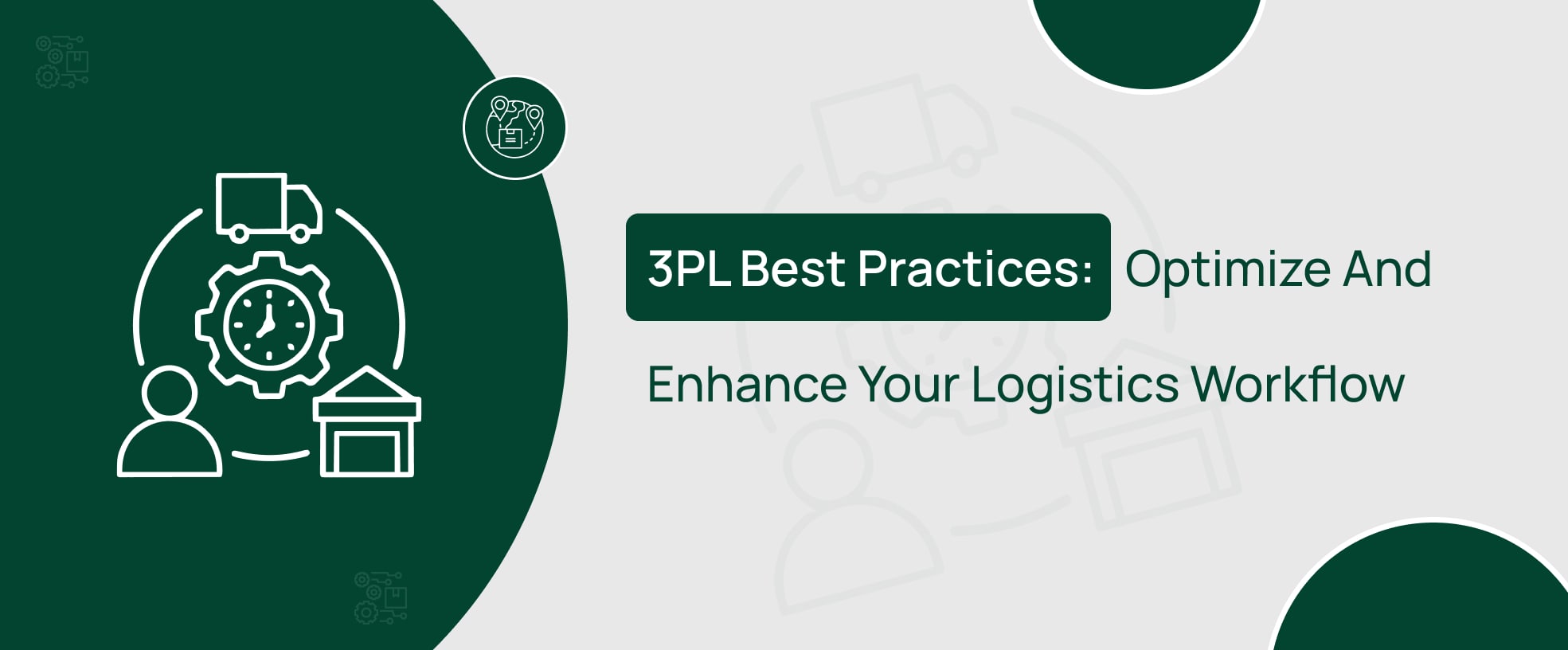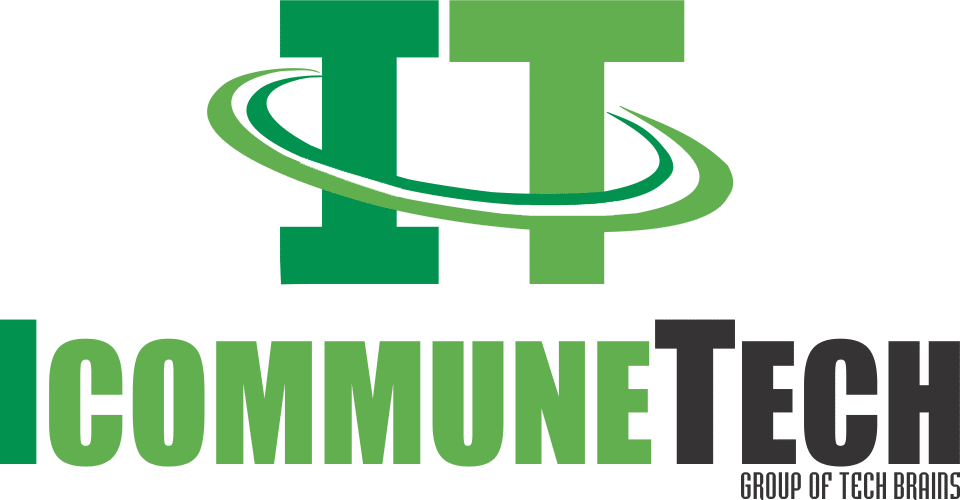3PL Best Practices: Sure Shot Way To Success!

Do you know how to unlock efficiency and let the profits flow in with high productivity? This guide to 3PL best practices will help you open the doorway to success.
What is a 3PL And Third-Party Logistics Provider?
A 3PL, or third-party logistics provider, is a logistics partner or an order fulfillment service provider. It facilitates the hassle-free movement of goods from the production unit to the end customers.
So, What Exactly Does 3PL Mean?
3PL companies are sometimes referred to as fulfillment centers, order fulfillment companies, fulfillment warehouses, etc. These service providers act as silent heroes behind logistics operations’ smooth running and success.
What Do They Do?
3PLs manage all inventory and fulfillment orders, including warehouse management, inventory tracking, transportation services, route optimization, data analytics, and other supply chain tasks. They help companies leverage centralized inventory efficiency, cost savings, and strategic distribution.
Sometimes, they manage the entire global supply chain (import, export, customs, etc.) and sometimes coordinate between customers and sellers.
Why 3PL is a Necessity?
If you are running a retail, e-commerce, or any other supply chain business, 3PL is a necessity rather than a choice. Besides handling all the logistics operations, the
Sometimes, they manage the entire global supply chain (import, export, customs, etc.) and sometimes coordinate between customers and sellers.
3PL Best Practices At A Glance:
3PL best practices comprise maintaining clear communication between different supply chain components, using advanced technology, and focusing on precise inventory management.
Did you know? According to NTT Data,The amount of shippers who were outsourcing to the 3PLs for greater business and technology value has been increased by 25% in 2025.
8 Best Practices for 3PL Providers:
In the ever-evolving world of logistics, third-party logistics providers need to work continually to deliver excellence and a competitive edge.
#1 – Leverage Technology for Seamless Operations
Managing and monitoring countless logistics tasks efficiently and precisely is impossible without technology. Embracing advanced, cutting-edge automation tools and smart warehouse technologies enables efficiency, accuracy, and easy scalability.
-> Invest in a Warehouse Management System (WMS):
Investing in a warehouse management system is the best thing to do. What is a warehouse management System? Software technology streamlines and automates all warehouse operations, eases repetitive manual tasks and brings efficiency, speed, and accuracy. This is one of the top 3PL best practices.
Leading Examples: DHL Supply Chain, Ryder, Shipbob, and ShipHero are some of the top-notch 3PLs using WMS.
Achieve 3PL Success With CommuteLogix – WMS!-> Utilize Robotics and Automation for Improved ROI:
Another 3PL best practice involves using the warehouse’s robotic arms and automation processes to increase efficiency and cost savings. Over time, increased efficiency improves efficiency, productivity, and ROI.
Leading Example: Kuehne and Nagel are the most profitable 3PLs using robotics and automation.
#2 – Optimize Inventory and Warehouse Management:
A well-organized and optimized warehouse is the key to success for any business. However, most logistics businesses cannot use the maximal warehouse storage space, leading to waste.
-> Implement Warehouse Zone Planning:
Organizes and optimizes inventory depending on the types of products, their picking frequency, etc. This helps streamline and speed up the order fulfillment process.
-> Streamline the Receiving and Put-Away Process:
Barcode scanners, standardized protocols, and warehouse automation eliminate the bottlenecks and errors in the receiving process. This infuses speed in the inventory and prevents stockouts.
-> Perform Regular Cycle Counts:
This ensures high accuracy in the inventory without discrepancies and maintains smooth operations without halts.
#3 – Strengthen Relations with Clients & Supply Chain Partners
Third-party logistics services largely depend on collaboration and communication bonds. Building a strong bond with customers and vendors forms long-term partnerships and enables businesses to grow further.
-> Fostering a long-term partnership:
Building long-term partnerships needs consistent performance by 3PLs. Delivering excellence with an advanced and cutting-edge WMS ensures smooth communication, and branding builds trust.
-> Understand Customer Requirements:
Studying market demands and knowing precisely what customers need helps. Offering value-added services like customized packaging and labeling and adopting strategies according to logistics models are also important.
Know specialized types of logistics strategies and trends here!
-> #4 – Improve Workforce Efficiency & Training:
A skilled workforce is the foundation stone of 3PL logistics operations. Hence, investing in employee training enables employees to adapt more quickly to warehouse technologies and leads to better productivity, reduced errors, and smoother workflow.
-> Cross-Train Employees:
Equip the staff with the right skills to handle multiple roles in different departments, which will lead to better efficiency.
-> Implementing Continuous Learning Programs:
Equip the staff with the right skills to handle multiple roles in different departments, which will lead to better efficiency.
#5 – Enhance Order Fulfillment and Shipping Process:
3PLs are fulfillment centers that aim to make hassle-free, on-time deliveries. So, a well-executed shipping strategy is necessary to ensure customer satisfaction and establish a loyal customer bond. This builds brand reputation, too.
Every 3PL operation aims to ensure smooth, accurate, and timely order fulfillment. A well-executed fulfillment and shipping strategy satisfies customer expectations and boosts brand reputation and repeat business.
-> Integrating Real-time Order Tracking Systems:
Real-time tracking of orders by AI or IoT in logistics and transportation ensures high visibility and transparency to reduce customers’ doubts and queries.
-> Implementing Distributed Warehousing:
Another commonly followed 3PL best practice is multiple strategic locations. This means storing the inventory near the end customers, reducing expenses on last-mile deliveries and shipping times.
-> Automation of Carrier Selection and Labelling:
The software is necessary for any logistics type. 3PLs should use it to select the best carriers and for the packaging labels.
#6– Leverage Data Insights For Informed Decisions:
Data insights are the lifeline for logistics. Data analytics enables third-party logistics to review market trends and make informed decisions for improved performance. Leveraging data insights allows 3PLs to make informed decisions, predict trends, and optimize performance.
-> Using Predictive Analytics for Forecasting Demands:
Leveraging advanced AI-driven insights to predict future trends and shipping requirements.
-> Monitor Key Metrics:
Monitoring key metrics like profit turnover from the inventory, performance in deliveries, customer satisfaction rate, etc.
-> Use dashboards and BI tools for real-time insights:
Visual dashboards and Business Intelligence provide instant visibility into the important key metrics.
Did you know? As per the report, The global 3PL market is projected to grow to USD 2334189.0 Million by 2032.
#7 – Prioritize Last-Mile Delivery Optimization
Last-mile deliveries are the final step of transportation, and the process is complex and costly. Making them a priority helps increase customer retention.
-> Using Route Optimization Tools:
Implementing AI-powered route optimization or embedding sensors in the vehicles helps in route planning, monitoring, and optimization.
-> Collaborating With Local Carriers:
Monitoring key metrics like profit turnover from the inventory, performance in deliveries, customer satisfaction rate, etc.
-> Offering Multiple Delivery Options:
Visual dashboards and Business Intelligence provide instant visibility into the important key metrics.
#8 – Ensure Compliance and Risk Management
3PLs must ensure the logistics and fleet comply with the latest Government regulations. This is important for avoiding penalties and ensuring safety.
-> Stay updated with regional laws (taxation, customs, environmental):
3PLs should monitor the local and international logistics to avoid non-compliance issues, maintain safety, and prevent accidents and product damage.
-> Risk Assessment and Insurance for Cargo Safety:
Comprehensive insurance is necessary to prevent damage to high-value shipments. Also, implementing risk-assessment technology prevents financial losses.
-> Implement Safety Protocols and Proper Handling Procedures:
Setting up all the safety guidelines and educating the employees to handle supplies with care prevents damage and accidents.
Apart from these 3PL best practices, a move towards greener and more sustainable logistics is helpful to save the environment. Integrating the best Logistics Management Software is like ending all your problems: being faster, more accurate, more efficient, and more productive.
Key Strategies for Improvements and Efficiency in 3PL Operations
Following the best 3PL practices mentioned above and adopting smart strategies leads to improvement and efficiency. Here are the key rules for continually evolving in the competitive market.
Strategy 1: Monitor and Measure Key Performance Metrics
Measuring KPIs or Key Performance Indicators enables 3PLs to evaluate their performance continually and helps them monitor bottlenecks and customer demands. This strategy improves efficiency and leads to better decision-making.
KPIs like Order picking accuracy, on-time delivery rate, inventory turnover, etc., are to be monitored periodically.
Strategy 2: Real-time Data Analytics For Data-Driven Decisions:
Using real-time data analytics to help businesses make data-driven and informed decisions about retaining customers, warehousing operations, shipping, etc. Real-time data analytics help customers find recent trends and bottlenecks (fix any issues).
Dashboards are used to track KPI in real-time and analyze expenses on transportation costs per shipment.
Strategy 3: Adapt to Market Changes with a Flexible Approach:
One of the 3PL best practices is adapting according to the market demands. Seasonal fluctuations and shifts in market trends need to be monitored by 3PLs for better operational efficiency and a high customer satisfaction rate.
Adopting this strategy means scaling the workflows and technologies per the seasonal demands.
Strategy 4: Stay Ahead of Industry Trends and Innovations
Logistics is an evolving industry, and hence, trends keep on changing. The best practice for 3PL is to follow the latest industry trends like AI in logistics , automation, reduced carbon emissions, green logistics, etc. This gives the service provider an advantage over their competitors.
Invest in robotics and software for warehouse automation, eco-friendly packaging, and adopting demand forecasting tools.
Strategy 5: Optimize Cost Management and Financial Planning
Cost management is an important consideration in logistics. It helps reduce resource wastage, increases profitability, and supports long-term growth. Technologies like Logistics Management Software can automate billing and invoicing and negotiate better rates with carriers and vendors. Also, conducting regular audits to maintain the budget is important.
Conclusion
Demand for 3PLs is increasing in the ever-evolving logistics landscape. To stay ahead of the competitors, these service providers need to follow 3PL best practices. If inefficiencies pull you back, you must adopt a smart strategy on time to ensure continual success and growth.
Key Takeaways:
Frequently Asked Questions (FAQs)
Do you have questions? Share them with us, and we will solve them, just like the FAQs below!
1. What makes a 3PL effective?
An effective and successful 3PL uses advanced technology, maintains a strong communication bond with clients, and takes a scalable approach.
2. What are the best practices for 3PL?
Adopting automation and technology, implementing WMS, continually training their staff, and maintaining strong client bonds.
3. What is an effective and beneficial 3PL strategy?
Successful and beneficial 3PL best practices or strategies mean aligning with customers’ goals, incorporating smart technologies, smooth communication, and continual improvement.
4. What are the six indicators of the logistics performance index?
The top six indicators of the Logistics performance index are Infrastructure, Customs, International Shipping, Logistics Competence, Timeliness, Tracking and Tracing, etc.
5. How do you set KPIs for logistics?
It is simple. All you need to do is identify all the key performance indicators (KPIs), such as on-time order fulfillment, inventory productivity, and customer satisfaction. Monitoring these KPIs continually helps businesses improve over time.
Bid Good-Bye To Problematic Logistics And Hello To Continual Profits!
iCommuneTech is the name to count on for the cutting-edge software solution to end your 3PL woes. Its advanced CommuteLogix software has been empowering top 3PL providers with advanced data insights, real-time tracking, route optimization, and much more.
Features of CommuteLogix:
CommuteLogix is easy to integrate with your present systems, easy to use, has high scalability, and has all the robust features of WMS.
So, do not wait any longer Get in touch today and integrate CommuteLogix to empower your 3PL businesses!

